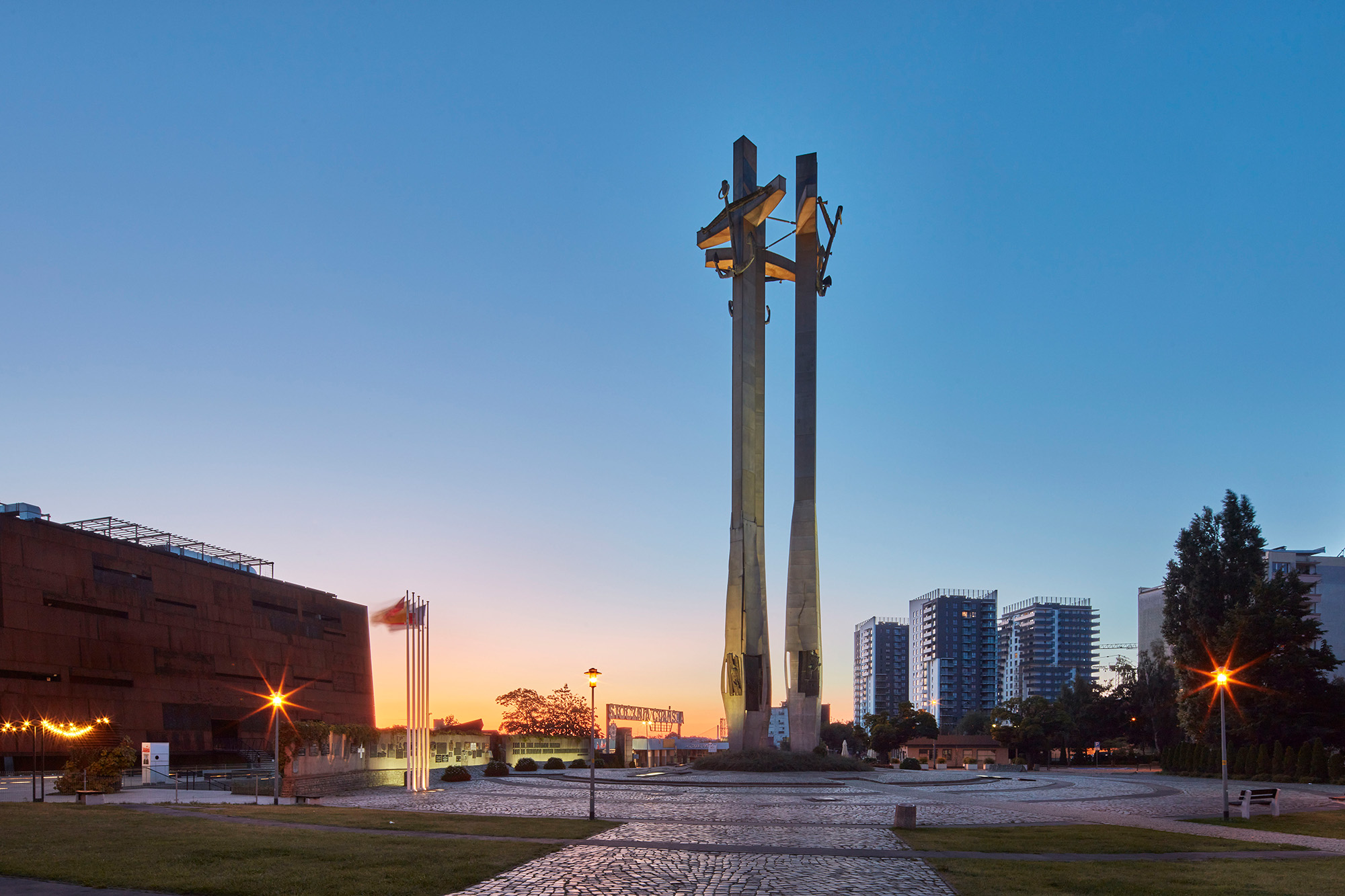Paul Raftery’s silent photographs of protest past
Spaces of the city which have witnessed revolution and uprising are returned to years later by architectural photographer Paul Raftery, capturing them in a different era. In dawn light, the empty spaces carry a haunting silence.
Architectural photographer Paul Raftery was in Kyiv, long
before the Russian invasion, when the idea for this project developed. He was
there to make images of a museum and a local suggested he visited a nearby
square central to the people’s uprising.
![]()
It led to this series on display at Anise Gallery, single images from nine post-Soviet nations recording urban spaces central to protest and revolution. Places which contained celebration and violence, joy and fear, and each with few traces of what had taken place years before are captured in Raftery’s urban portraits.
Over the last three years, Raftery has visited such sites in Gdańsk, Leipzig, Riga, Vilnius, Tallinn, Sofia, Timisoara, Budapest, and Prague. All these cities are now part of the European Union, with some of the squares now showing how in a relatively short period of time an entirely different city has emerged.
![]()
![]()
What were once sites of protest and revolution now read as spaces of tourism and consumption. Signs for McDonalds and hotel chains now ordain façades, capitalist billboards look down. But there is a silence permeating the spaces, Raftery getting up at dawn to photograph before the city awoke – a shorthand metaphor for the birth of a new epoch.
![]()
![]()
For the act of making the images, the photographer was largely alone in that silence, allowed to feel the place and wait for the right moment to capture emptiness. In Wenceslas Square, Prague, however he had to wait and wait and wait for the last remnants of stag do to pass and the last taxi to turn the corner – a square that never sleeps – and in Leipzig he was confronted by a small group of far-right thugs who took offence that he was photographing the space of political change, “we don't want democracy,” they told him.
![]()
![]()
![]()
The installation at Anise Gallery, which has an architectural focus in all its exhibitions, displays two QR codes by each image – one links to a biography of the place to offer some historical context, while the other links to an archive image of the citizens’ actions at the moment of protest.
![]()

It led to this series on display at Anise Gallery, single images from nine post-Soviet nations recording urban spaces central to protest and revolution. Places which contained celebration and violence, joy and fear, and each with few traces of what had taken place years before are captured in Raftery’s urban portraits.
Over the last three years, Raftery has visited such sites in Gdańsk, Leipzig, Riga, Vilnius, Tallinn, Sofia, Timisoara, Budapest, and Prague. All these cities are now part of the European Union, with some of the squares now showing how in a relatively short period of time an entirely different city has emerged.


What were once sites of protest and revolution now read as spaces of tourism and consumption. Signs for McDonalds and hotel chains now ordain façades, capitalist billboards look down. But there is a silence permeating the spaces, Raftery getting up at dawn to photograph before the city awoke – a shorthand metaphor for the birth of a new epoch.


For the act of making the images, the photographer was largely alone in that silence, allowed to feel the place and wait for the right moment to capture emptiness. In Wenceslas Square, Prague, however he had to wait and wait and wait for the last remnants of stag do to pass and the last taxi to turn the corner – a square that never sleeps – and in Leipzig he was confronted by a small group of far-right thugs who took offence that he was photographing the space of political change, “we don't want democracy,” they told him.



The installation at Anise Gallery, which has an architectural focus in all its exhibitions, displays two QR codes by each image – one links to a biography of the place to offer some historical context, while the other links to an archive image of the citizens’ actions at the moment of protest.

Paul Raftery is a photographer of the built environment with
an international reputation who has been shooting around the world for more
than 30 years. Following his last exhibition at Anise Gallery, Berlin Voids,
Paul was invited to show the work at the Stiftung Berliner Mauer (Berlin Wall Memorial).
His films (made with Dan Lowe) have been shown in numerous galleries and
festivals, including the New York Architecture Film Festival and the city’s
Gagosian Gallery.
www.rafphoto.com
Anise Gallery was founded in 2012 by Jacquelyn Jubert and
Joseph Robson, Anise Gallery is a contemporary art gallery with a strong focus
towards the architectural aesthetic, presenting an exciting programme of
exhibitions, events and talks that relate to architecture, technology and the
built environment. Supporting, promoting and connecting with recent graduates
from London art schools and those further afield has always been a core part of
Anise Gallery’s programming; we are therefore delighted to welcome students
back to the gallery in 2022 as a showcase of the most exciting and innovative
emerging talents.
www.anise.gallery
visit
A New Dawn For Europe, by Paul Raftery, is on at Anise
Gallery, London, until 22 October 2022.
www.anise.gallery
images
All images courtesy of the artist and Anise Gallery, © Paul Raftery
publication date
12 October 2022
tags
Anise Gallery, Budapest, Crowd, Gdansk, Leipzig, Prague, Protest, Paul Raftery, Revolution, Riga, Sofia, Square, Tallinn, Timisoara, Uprising, Urban space, Vilnius
www.anise.gallery


